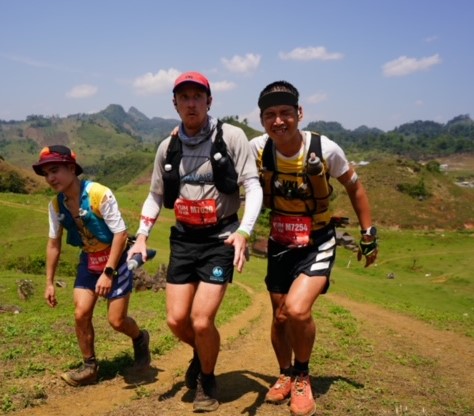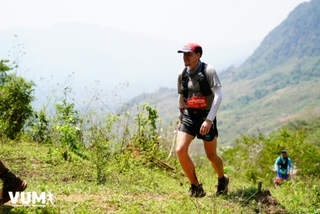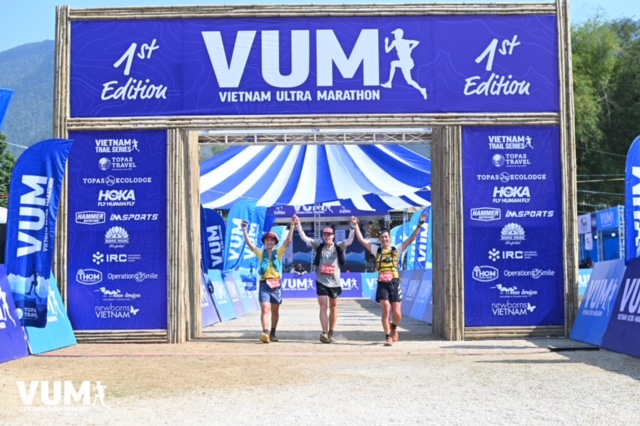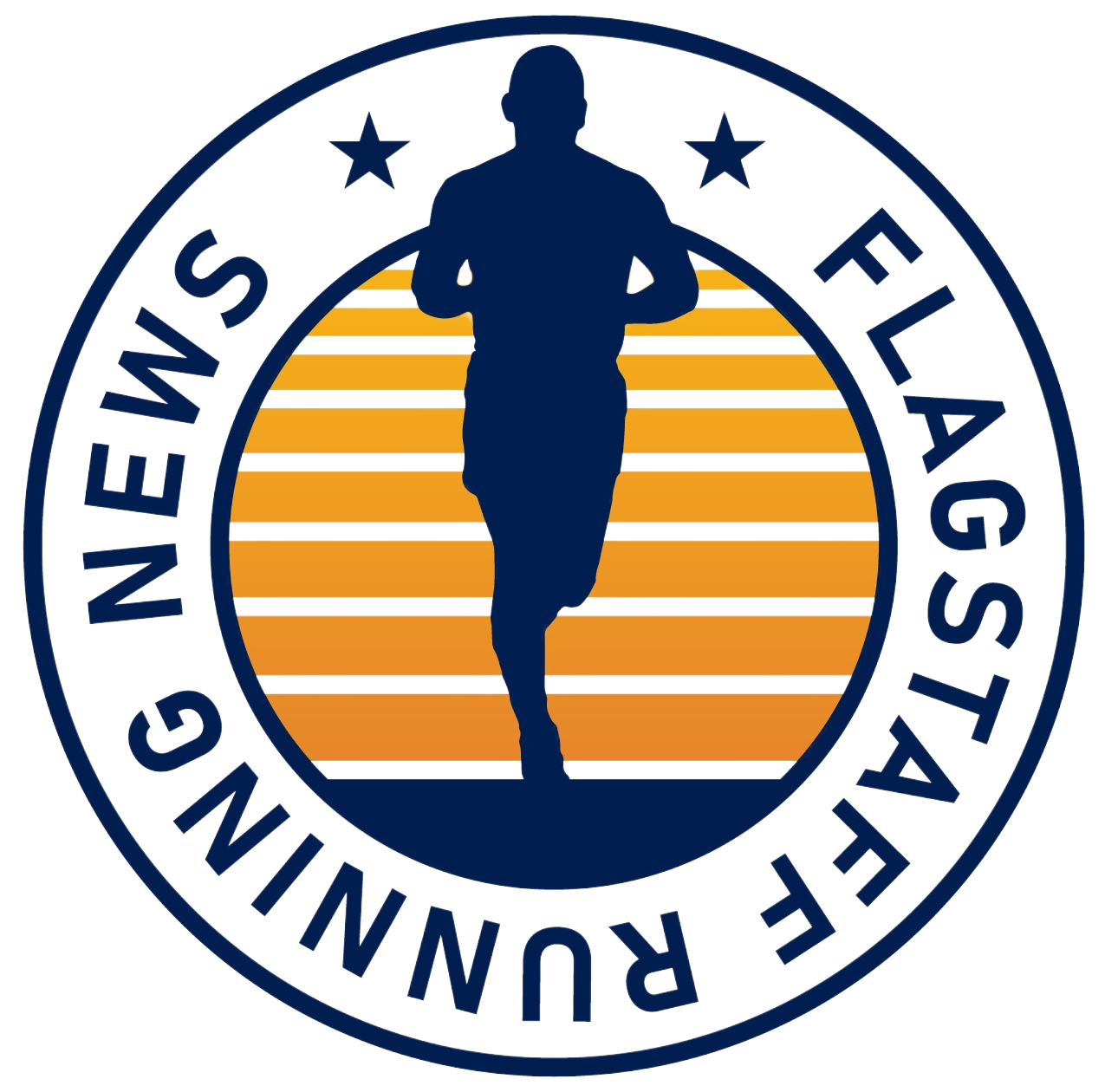Culturally insensitive, sure, and perhaps inappropriate on so many levels, but it’s hard – nay, impossible – to resist making this your first question posed to Ruairi Moynihan:
Do you have PTSD from your experience in ‘Nam?
Moynihan, an accomplished hybrid Flagstaff road-trail runner probably best known for the TrailGangstAZ group, makes the joke himself now when out running with friends, referencing his “time in ‘Nam” and the struggles he faced racing the inaugural Vietnam Ultra Marathon 73K last month.
“Yeah, I know is not appropriate,” he said, smiling sheepishly, “but I have friends in the military, and they laughed, so …”
The Vietnam War, now five decades in the past, may be a fading memory to some – and, heck, the 34-year-old Moynihan wasn’t even born when the war ended – but the country and its people still resonate with Americans; its very mention still is fraught with meaning.
So, when Moynihan found himself with a few free days on a business trip in Thailand, he entered the elite field in the race that traversed the Mai Chau region of the country, deep in the rural valleys and foothills about 80 miles from Hanoi, where the Muong and Hmong villagers rarely encounter Westerners.
Now, Moynihan is an experienced trail runner with several ultra wins under his belt, and few things surprise him. But what he didn’t expect was a course with 10,826 feet of elevation gain that – not to put too fine a point on it – kicked his butt.
He wasn’t expecting 90-degree heat, 97 percent humidity with a dew point at 80. He wasn’t expecting having to traverse through rice paddies in the dead of night with only an eight-inch concrete canal keeping him from being stuck in the muck. He wasn’t expecting trekking up and down hills so thick with vegetation that he wished he’d had a machete. He wasn’t expecting to have to grasp tree branches to keep from falling on severe, muddy turns. He wasn’t expecting to get lost in rural villages and serach for stores to restock provisions. And he wasn’t expecting, a mere 10K into the race, to have a thorn from a protruding bush pierce one of his hand-held bottles, water exploding everywhere.
Through all that, though, Moynihan seems to have loved every minute of it – in retrospect. Sure, he was disappointed in his 9th place finish in what for him is a slow 11 hours 48 minutes 42 seconds. But given the conditions and his lack of familiarity with the course and terrain, he said he can’t be too disappointed.
What really made the experience worthwhile, he said, was the people of Vietnam, their openness and caring, their willingness to go out of there way to help an American in the wilderness – given all the freighted history of bombings and attacks by U.S. troops during the war.
Moynihan, who works facilitating international travel for U.S. students and also is a substitute high school English teacher for the FUSD, has often raced internationally. Spain and Fiji, for instance. But Vietnam was special.
“I had some minor visa issues getting in – filled out the wrong form – and it kind of reminds you there’s still that history that hasn’t been smoothed over,” he said. “It was hard to get in the country, but that was immediately erased because the hospitality from people to the airport to the race staff – everyone was so friendly.
“I’m aware of the history between the two countries and I’ve always wanted to visit for that history. In terms of that (war) vibe, everyone was so welcoming I almost forgot about it. The only time I started to think about it was toward the end of the race, where you’re feeling beat up and emotional.”
Once Vietnamese runners learned Moynihan was American, they made it a point to greet him and ask about his life. When they asked him where he hailed from in the U.S., Moynihan said “Arizona,” but not everyone was familiar with the state. So then he said “Grand Canyon,” and a few more nodded and said in broken English, “Rim to Rim to Rim.” Still, some were baffled.
“The thing that worked 100 percent of the time was when I said, ‘I live in the same town as Jim Walmsley,’” said Moynihan, referring to the UTMB and Western States champion ultra runner from Flagstaff. “They got so excited. ‘You know Jim Walmsley?’ they asked. When we ran into one photographer the other runners said, ‘Take his picture, this guy knows Jim Walmsley.’”
Moynihan was treated like a minor celebrity among race officials and runners. When he did a rap mentioning Mai Chau during the elite panel discussion, he said he got a strong positive reaction from people – even the uniformed military and government officials that seemed omnipresent.
“One thing that was intimidating is that (the race director, an Englishman) had to recruit the city and government officials for the race,” Moynihan explained, “so you’d see a lot of uniformed officers at aid stations, driving along the course, in the pre-race ceremony. They were in the audience for the performances, music and traditional dances. They asked me before I did my rap, ‘Is your song appropriate? Say something about Mai Chau and you’ll be fine.’”
So, he did. And the Vietnamese people responded. It turned out that Moynihan would need all the help he could get from locals once the race began.
He thought he was properly prepared. As an English teacher, he is familiar with Tim O’Brien’s classic Vietnam War story, “The Things They Carried,” and so Moynihan was happy to pass along that, for the record, he carried on his trek two 17-ounce Saloman bottles, an extra plastic water bottle in his vest, a couple of hand-helds and a ton of gels.
He also carried the expectations of finishing on the podium, which is why, he said, the race director hyped him up so in the pre-start festivities.
“They were impressed by my (road) marathon times (2:21), I guess,” he said. “But that means nothing on a technical course with locals familiar with the terrain.”
‘There were big boulders, roots, moss, and humidity. Every step was just uncertain. The only way to get from one village to another is through that cement barrier about 6 to 8 inches wide on the rice paddies. You had to balance, literally put one foot in front of the next.
Ruairi Moynihan
Hours later — after having stepped in the rice-paddy fertilized water and muck, after stumbling over roots, boulders and slabs, after getting lost and asking for hydration help in rural villages unaccustomed to Anglo visitors, after receiving aid and a trekking pole from a Vietnamese runner – Moynihan went from competing to “just surviving.”
For that, he can thank two Vietnamese runners, Trung Nguyen and Pham Quang Vu. About halfway through the race, Moynihan and a Canadian runner, Stephen Weller, were barely hanging on to the back of a pack of speedy Vietnamese men all wearing the same team singlet.

The first sign of distress for Moynihan – other than the rice-paddy incident – was when he got turned around in the dark and made a wrong turn somewhere in a valley.
“On the rice paddy section divider, I got lost for a while, and that set me back from third to seventh or eighth,” he said. “It was a little bit of a mental blow. I was like, ‘All right, let’s just try to get top 10.’ As I moved slower over the terrain, I realized I was going to be in the sun in the peak hours and it was getting to be 90. I was at one aid station for a long time. Classic fail. Everything was going wrong. Stomach issues, etc.”
When the Canadian runner dropped back, Moynihan faced the daunting prospect of running alone – what ultra runners call being in no-man’s-land – for much of the rest of the race. His only hope was to keep up with the two Vietnamese runners.
“I’m thinking, ‘Going to be solo, I don’t know this terrain. I better stay with them,’” her said. “I guess I was going fast enough that they’d tolerate waiting for me. They were moving way better on the downhill sections. Even they were worried about getting hot and hydrating. At one village, they asked a farmer if he had any water, and they didn’t have anything drinkable by our standards, so he had a shed with rainwater in it and let us stick our hats in there. They translated for me, and I really appreciated that.”
That’s when the two runners took him in and slowed their own pace to help Moynihan persevere. He also had local villagers take pity on him.
“As we went through the villages – indigenous people, in a way, very impoverished and still affected by the bombing decades ago, not as developed – those people were so friendly,” Moynihan said. “(The race director) told us to bring a little money in case you needed extra water and snacks between aid stations. I brought some money, but I guess I looked so tired and depleted, I was trying to pay and grabbed snacks and water and these women who owned the shop wouldn’t let me pay. They wouldn’t take my money. I even tried to leave it and they handed it back to me. That made a powerful impression, because it looked like they could definitely use it (the money).”
No matter how much help he received, Moynihan had to run his own race. And that meant traversing treacherous footing. He admits to not being the greatest technical runner, and this was harder than any course in Arizona.
“There were big boulders, roots, moss, and humidity,” he said. “Every step was just uncertain. The only way to get from one village to another is through that cement barrier about 6 to 8 inches wide on the rice paddies. You had to balance, literally put one foot in front of the next. You can’t stutter step; otherwise, your foot would go into the fertilized water, which I did.”
And yet, Moynihan finished – and placed in the Top 10.
“The pain fades, just like any runner who’s done a race,” he said with a shrug. “You remember the highlights.”

Those highlights mostly revolve around the kindness of the people, but also the little things like the food at the aid stations.
“They had this, well, gruel that had rice, chicken and veggies,” he said. “It was good. Also, Japanese sweet potatoes, pumpkin soup and spring rolls.”
That’s certainly a change from the fare at U.S. ultras. But Moynihan, a member of the Aravaipa Race Team who won January’s Coldwater Rumble 40K and last Sunday’s Dam Good Run 26K, is the kind of guy who seems up for anything.
He was a good Division-III runner at St. Johns University in Minnesota and, post-graduation, decided to go on a quest to meet the Olympic Trials Marathon standard of 2:18. And that meant leaving his full-time teaching job in Goodyear, where he also coached the school’s cross country team, and moving to Flagstaff. It was a bold move, even though Moynihan didn’t have a family or even a dog to uproot.
Quickly establishing himself as a presence in the Flagstaff running community, Moynihan founded Trail GanstAZ, a club-cum-coaching service. He also was one of the organizers of Peak Trail Runners (formerly known as “Will Run for Beer”), which meets every Wednesday for trail runners in the area.
Perhaps his biggest contribution was becoming the race director of his own creation, the Flagstaff Doggie Dash and Buffalo Loops Ultra, the first a 5K in which people run with their dogs and a timed 12-hour, 6-hour or 3-hour sojourn around the two-mile Buffalo Park loop. He also hosts the Thanksgiving run Turkey Trottin’ in the Pines, in which mere mortal runners race a pro (Molly Seidel two years ago, Jeff Browning last year) up Turkey Hill.
“I try to stay involved in the community as much as I can,” Moynihan said. “It comes from being a teacher and xc coach. In Goodyear, I built this team and I always wanted to get people running who otherwise would not. Make running fun. Some people take it too seriously. I can go bother ways with it.”
Moynihan’s next race will be June’s Fargo Marathon. He’s originally from the area and was good friends with the race director, Mark Knutson, who died last year when hit by a car while riding his bike. He’ll run in honor of his friend, even though Moynihan plans to undergo surgery by year’s end to correct Haglund’s Deformity in his right heel, a running injury that’s plagued the likes of Galen Rupp and Flagstaff’s Tyler Day and Rob Krar.
“I’m not doing damage (to his heel) necessarily; it’s just painful,” Moynihan said. “It’s just a bone growth that hurts every time you step.”
Oh, just that.
No problem for Moynihan. He’s been through worse. Just ask him about his time in ‘Nam.



Leave a Reply